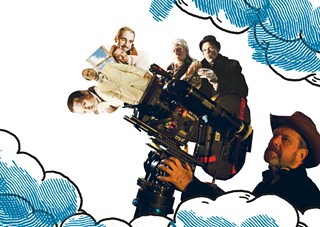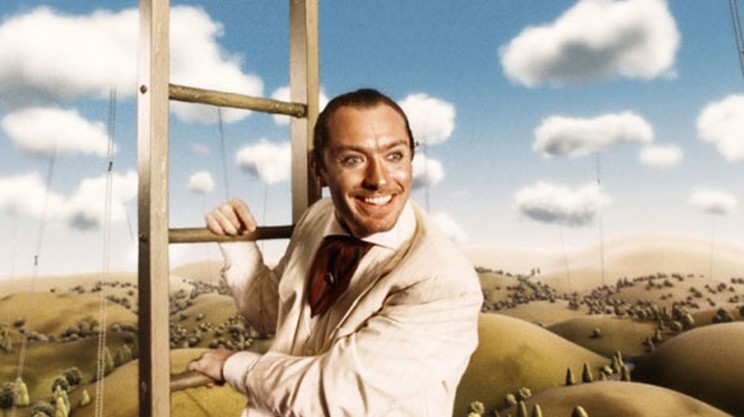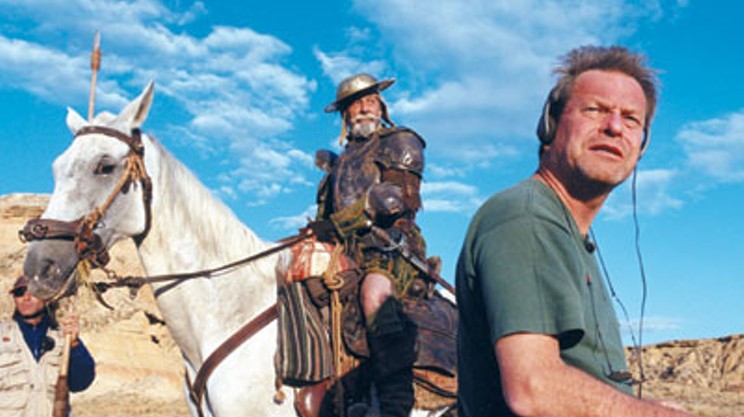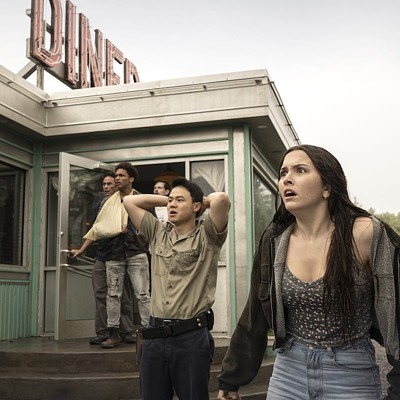When Terry Gilliam laughs, it comes out as a maniacal giggle. You may have seen the documentary Lost in La Mancha, about the director's failed third attempt to make an adaptation of Don Quixote. His giggle echoes through the doc, despite the massive disappointment of a production that falls apart. Gilliam's laughter in the face of that kind of professional apocalypse is a sure indicator of his irrepressible lust for life and his drive as a filmmaker. It should be no surprise that since then, at age 69, he's managed to complete one of his best films, despite the mid-production death of a key cast member. He just doesn't give up.
Terrance Vance Gilliam was born in Minnesota, but found success as the only American member of Monty Python. He was responsible for all the surreal animations in their TV show and co-directed their 1975 comedy classic Monty Python & The Holy Grail. For the past few decades, he's been an internationally acclaimed director of brilliant, sprawling fantasy films, often set in---or exploring regions of---the human mind. They include Brazil, The Fisher King, 12 Monkeys, The Brothers Grimm and, opening this week, The Imaginarium of Doctor Parnassus.
This newest work is recognizably a Terry Gilliam film in its phantasmagoric look and preoccupations. Parnassus (the extraordinary Christopher Plummer) is the leader of a theatre troupe of sorts, practically a travelling circus, who makes a deal with the devil (Tom Waits) for immortality. In exchange, he has to hand over his daughter, Valentina (Lily Cole), on her 16th birthday, something he very much wants to avoid doing. Parnassus controls a magic mirror that allows audiences to enter an alternative reality, the Imaginarium of the title, a peculiar place that allows Gilliam to run riot with his wild visual proclivities. As has been widely reported, Oscar-winning actor Heath Ledger, who plays Tony, the mysterious new member of the troupe, died unexpectedly while in production but due to the nature of the Imaginarium, where people see what they want to see, Johnny Depp, Jude Law and Colin Farrell were able to step in to play Tony behind the mirror and helped complete the film.
"Here's what's interesting," says Gilliam on the phone from Toronto, on the subject of how easily they were able to incorporate the other actors after Ledger's death. "Nothing changed, and hardly any dialogue was altered at all. Certain things, like when Johnny appears, the woman says, 'I always dreamed you'd look like this.' That helped accentuate what was going on. It's her imagination that helped turn Heath into someone that looked like Johnny."
Though the visual sumptuous of the Imaginarium shares some similar elements with Gilliam's 1988 film The Adventures of Baron Munchausen, visual technology has come a long way since then. Gilliam likes computer-generated imagery to help create his visions, but only if it serves to make them more convincingly surreal.
"The worlds we try to create, I always wanted to base them on a painterly style, not wanting to get involved in naturalism in any form," he says. "On Parnassus there's a lot of model work that's all mixed in. I try to keep it mixed so it's not completely clear how the trick was done.
"I think it's going to be interesting when we see Avatar, how that's going to work, because that's all CG. I think when CG began, like Jurassic Park, we loved it, but more and more I think our subconscious knows it's not real. If you're trying to create situations that are, quote, realistic or naturalistic, do you really care? Just because you can make something extraordinary, doesn't mean you should."
Gilliam's legacy is inexorably tangled with his films' massive production problems. Beyond his Quixote debacle, tales of his fights against interfering Hollywood studio executives stalk his body of work. Brazil, for example, exists in a number of different forms; the brutal, studio-cut version is a great example of how the money people never got it.
Gilliam doesn't mind his rep as a maverick, larger-than-life pain in Hollywood's ass, even if it's exaggerated.
"Everything I do is blown out of proportion," he says. "That's fair enough. It's probably more interesting than what's the truth." He adds, "I'm just trying to litter the landscape with films that aren't like other people's films."
Once Parnassus is behind him, Gilliam will once again attempt The Man Who Killed Don Quixote in 2010, starring Robert Duvall.
"If you're going to play with Don Quixote, you've got to be as crazed as he was," he says, unleashing the giggle. The role originally considered for Johnny Depp will go to another, yet-to-be-disclosed actor, since Depp "has to swash his buckle a little longer." The giggle again. "He sold his soul to Hollywood for a few years, but he'll be back."
An essential element of Gilliam's vision is absurdity, from Monty Python's bizarre animations to the singing and dancing in Parnassus. Gilliam considers the absurd essential to both living and art.
"People don't want to admit that," he says, sighing. "Humour is a way of dealing with it. What I try to do is break down the structures that people build to protect themselves against the absurdity of life. I'm trying to get them to go back to being children again, without all those barriers. Life is chaos---either you get depressed by that or you wallow in it. Enjoy it!"


















